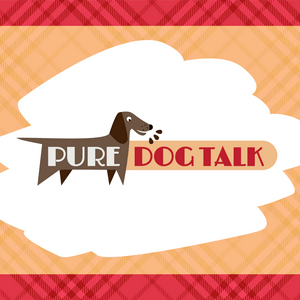692 — Pro Tips for Hot Dog Shows and When Safety Overrules Ribbons
Pro Tips for Hot Dog Shows and When Safety Overrules Ribbons
Host Laura Reeves brings you Pure Dog Talk's LIVE@5 discussion of the hot summer dog shows and when safety is more important than ribbons.
"Let's talk about what hot means. And everybody has their own understanding of it, right? So what is hot to someone like myself from the Northwest might be no big deal if you're from Phoenix. Understand that if you're hot, your dogs have similar acclimation and so it's really important to understand what your dog can tolerate.
"I was doing my handling class for folks last night and I was talking about this topic and I had a pug dog back in the day, Pug Special, and the day he went best in show in Wisconsin, the thermometer said it was 105 and it was 85% humidity. Yeah, it was really gross. If you look at the photo of me from that day, I look like I've been dipped in olive oil. It is just disgusting.
"The judge was Norman Patton. I remember it all very clearly and he flat told me that the reason my dog went best in show that day, not just was he a nice pug dog or what have you, but on that horrible gross awful day, my dog went around the entire best in show ring without panting.
"And so a lot of that has to do with what the dog is acclimated to. That particular pug dog lived in Nebraska at the time. He was accustomed to gross humidity. And my dogs were not pampered pets. They went outside in the gross humidity. I was careful with them, but they were acclimated to the heat and the humidity, which other dogs If I had brought him straight from the West Coast to that environment, he'd have died. But because he was acclimated after a couple of years in Nebraska, it was more manageable for him.
"And the other thing that I did was manage his situation. So at a hot dog show, you have an ice chest full of ice and water. More water than ice, but it is ice cold water. You do not give that to your dog to drink. You put your cool coat or your shammy or your towel or your whatever you're going to use in that water and then you ring it out as much as you need to for your dog's coat and you put it on the ground and you have the dog stand on it.
"You do not put it over the dog's back because that's not going to get them cool. Dogs release heat from their pads, they release heat from their ear flaps, they release heat in their groin, anus, all of the places that have unfurred space. And so if we're going to keep our dogs cool, the way to keep them cool is to have the coldness underneath them.
"And then I had a good Ryobi fan. I had a spray bottle with water in it, and I had another shammy and I had trained him. So this is the other part. He was trained. That's an important part of this conversation. He was trained. He could lie down on his side in the ring and I would cover his eyes, his whole head up with another cold chamois. And so he was iced, literally, he was chill.
"And this particular ring was outdoors, kind of in semi shade. I spent the vast majority of that time in the best in show ring with the dog lying down and my back to the judge, to the ring, to everything else so that I could put him in the shade. I used my body to shade him because there wasn't as much shade as I would like there to be.
"So you can manage the heat if the dog is accustomed to it, if the dog is fit and if it is acclimated to the basic conditions and then you can keep them cool enough for the amount of time that you have. So that's number one.
"Number two, remember. There's no law that you have to go to the dog show that you entered if it's 100°. Another special, another time, another place. There was a big candy ass. I can't say it another way. God love him. I loved that dog, but he was not heat tolerant and he had won a big specialty in California. And I had a huge falling out with his co-owner over it because I refused to show him the group, because it's gonna be 105 and it was out in more sun and he was going to be...


